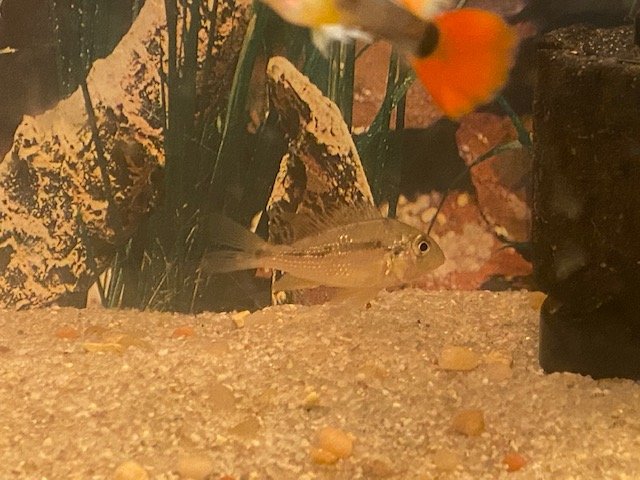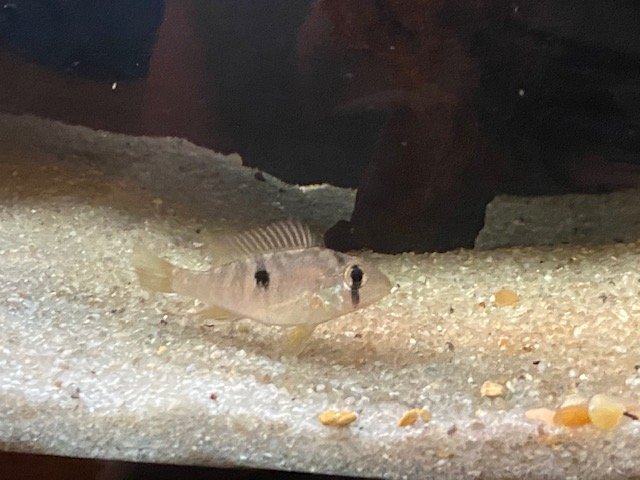Does anyone know the water parameters of this ciclid? I have been able to find that they like a sandy substrate and fast moving water, but I can only find one mention of ph which was taken from water where they were collected as being 8.0, but I am not sure if this is correct. I have 5 juveniles, and would like to be able able to sex them, but so far the 2 with a lateral line are the most aggressive, and I thought that was the females (which are reported to not be as aggressive). Sorry about the lighting, I had to move the ?female? to a smaller tank as she was exhausting the other fish. I am new to this forum so let me know if this is the correct way to post this question.
Cheers,
Christina


Cheers,
Christina




